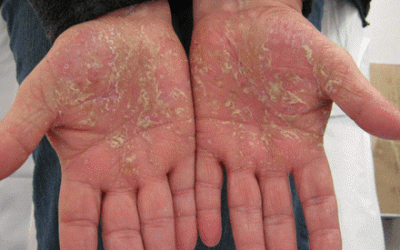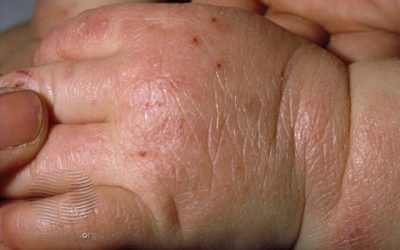Scabies
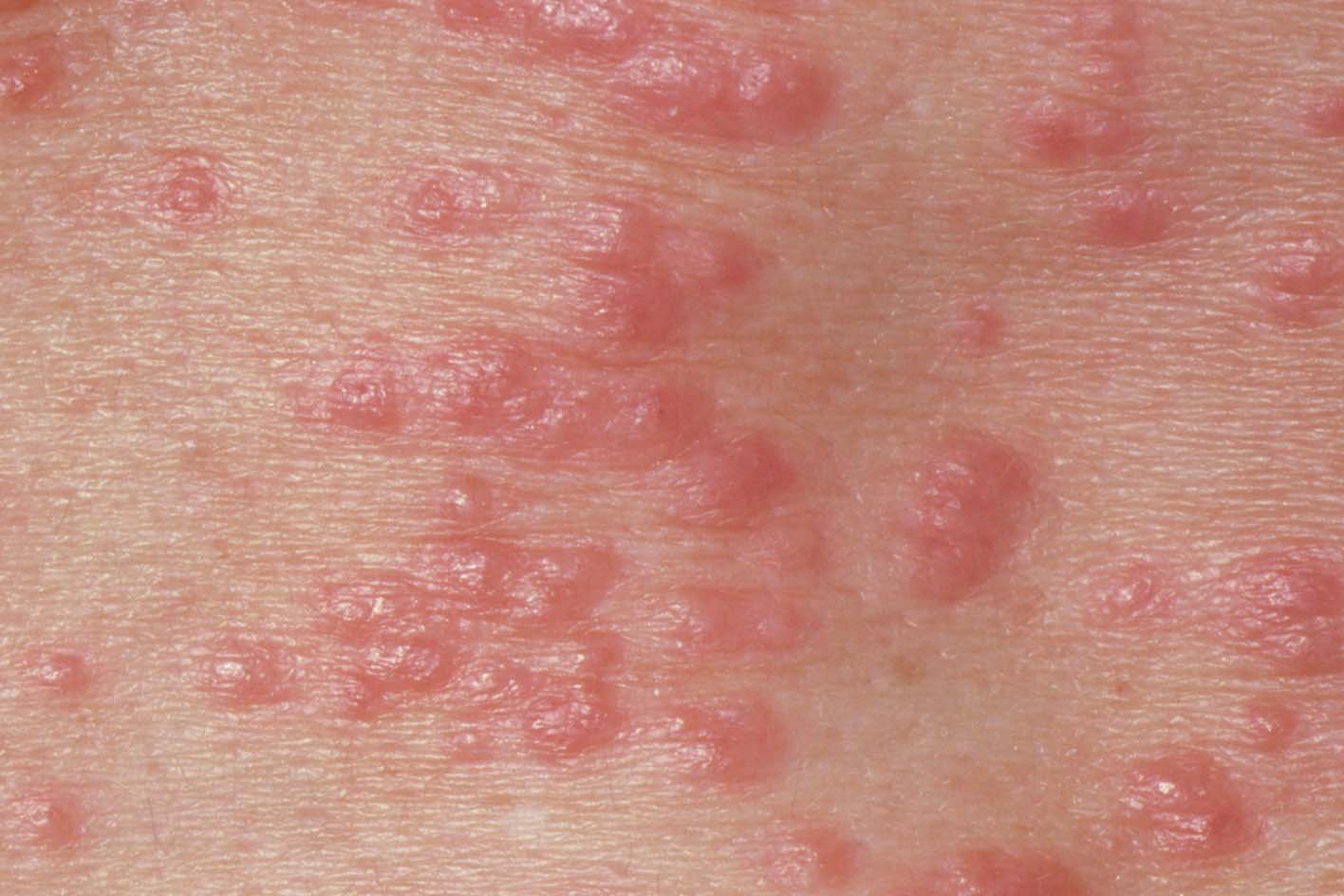
Scabies – A contagious parasitic skin disease characterized by extreme itching.
- Caused by: Sarcoptes scabiei var. hominis (mites)
- Mites mate on the surface of the skin, males die quickly
- Without a host (human), ticks survive in the environment for 3-4 days.
- Spread by direct contact with a sick person or through infected objects
- The disease manifests itself in 1-8 weeks from the day of infection
Risk factors:
- poor diet
- weakened immune system
- bad hygiene
- old age
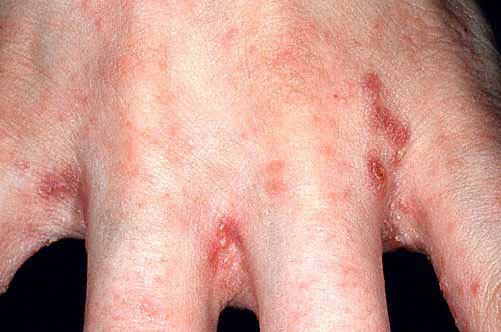
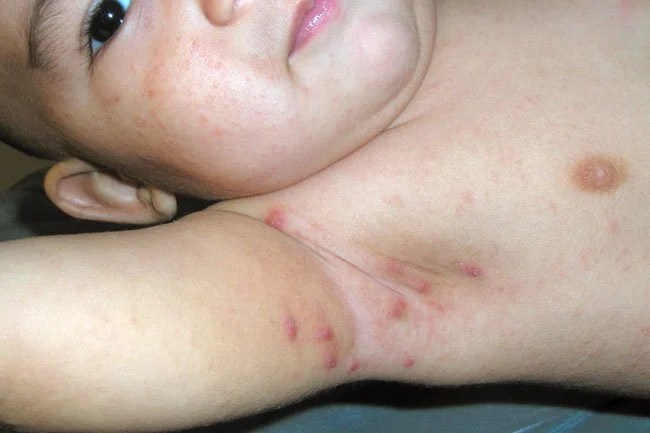
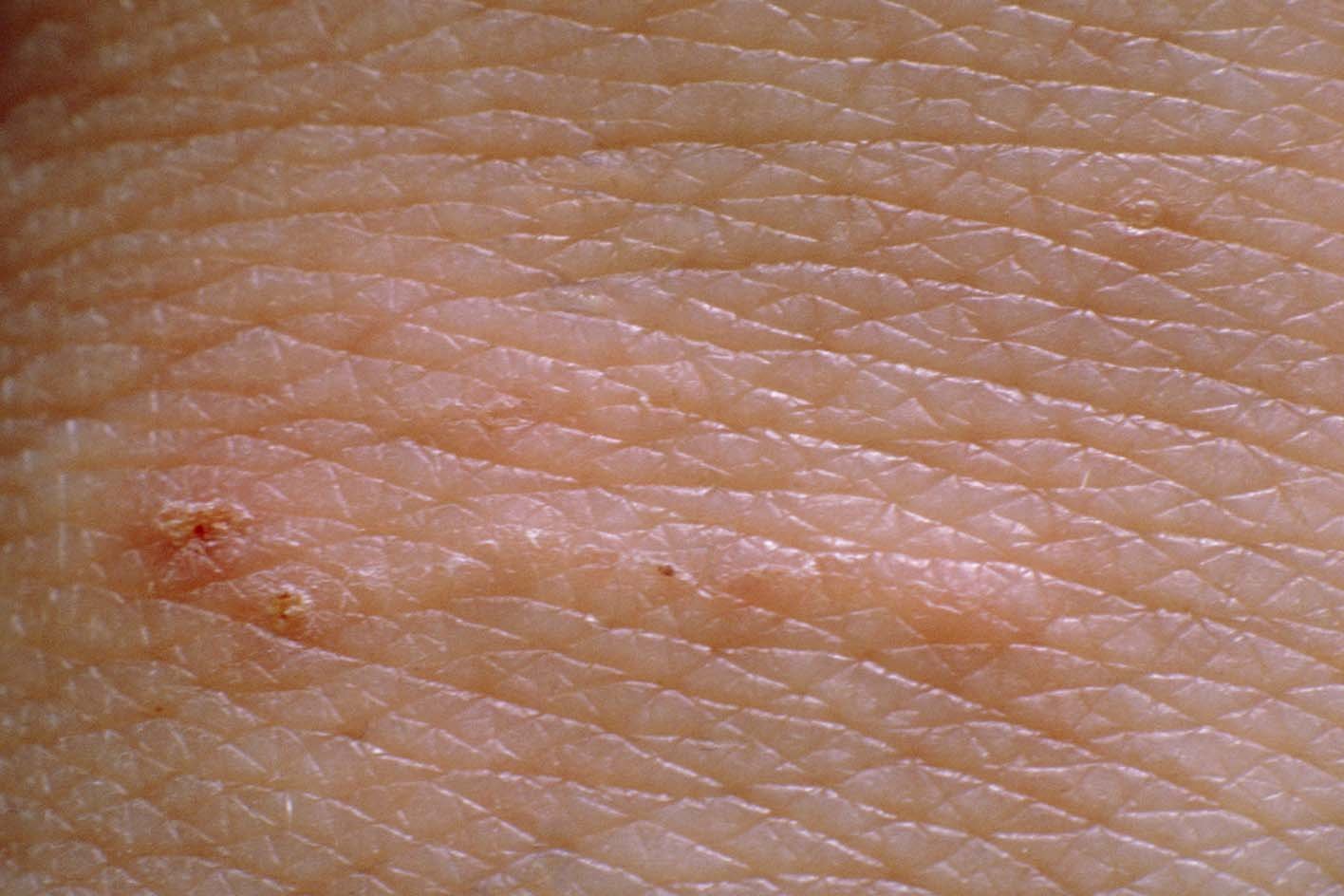
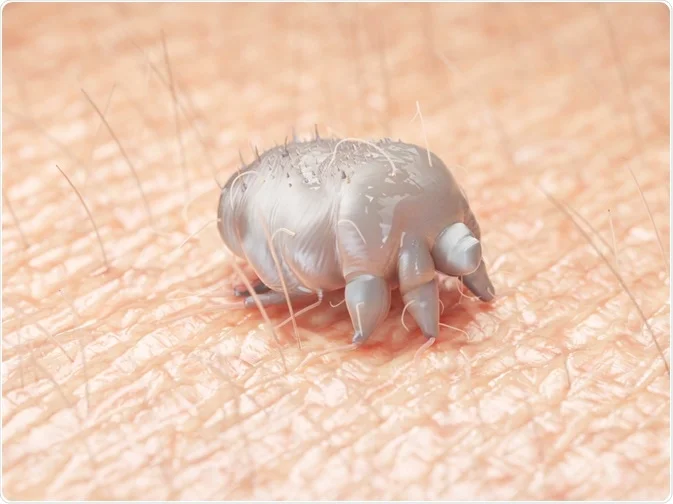
Clinical Signs
- Characterized by severe skin itching (especially at night), which may persist even for several weeks after the end of treatment
- Rashes:
-
- characteristic at the beginning of the disease elongated paired scaly papules (palpable bumps on the skin), also known as tick tracks
- localization of rashes: interfingers, palms, wrists, elbows, nipples, navel
- after 2 weeks from the onset of symptoms, as a hypersensitivity reaction of the body, generalized rashes (spread over most of the body) may occur
- then the face and scalp are usually not affected
- characteristic erythematous (reddish) papules on the skin of the trunk and limbs
- sometimes diffuse nummular (coin) dermatitis may occur, which is characterized by coin-shaped, very itchy rashes with plaques (larger than papules, palpable bumps on the skin)
- blisters on the palms and soles are also common
- papules, nodules in the groin, genital area
-
Diagnostics
It is usually enough to establish a diagnosis:
- anamnesis
- clinical signs
If there are insufficient data from the anamnesis and the clinic, then the following can be performed:
- dermatoscopy
- microscopy
Treatment
During the consultation, an individual treatment is selected for each patient, the aim of which is to eradicate the parasites that cause the above-mentioned symptoms. Ointments for the skin of the whole body (permethrin, benzoyl benzoate) or systemic treatment with oral drugs can be chosen for treatment.
Prevention and disinfection
Prevention:
- the patient must avoid contact with people for 24 hours after using medication
- all patients of the same focus should be treated simultaneously
- screening of family members, team, workplace and sexual partners is required
- the patient must use personal hygiene measures, sleep separately from other family members
Disinfection:
- patient’s clothes and bedding, used for 4 days before treatment must be washed in >60º C water or boiled in 1-2%. in a soda solution or with detergents for at least 10 minutes.
- clothes that cannot be washed are ironed on both sides with steam or placed in plastic bags and stored for 4 days
- coats, fur and leather products are stored outside for 5 days (during the cold season, 1 day at sub-zero temperatures)

Palmoplantar pustulosis
A rare chronic inflammatory skin disease that primarily affects the skin of the palms of the hands and soles of the feet.
Atopinis dermatitas mažam vaikui
Atopinis dermatitas (ang. atopic dermatitis) – lėtinė uždegiminė odos liga, kuri dažniausiai pirmą…
Atopinis dermatitas mažam vaikui
Atopinis dermatitas mažam vaikui – lėtinė uždegiminė odos liga, sukelianti niežėjimą, paraudimą ir šlapiavimą. Sužinokite apie veiksmingus gydymo metodus.
iDerma
MB iDerma
Fabijoniškių g. 99, Vilnius
+370 671 33323
info@iderma.lt

